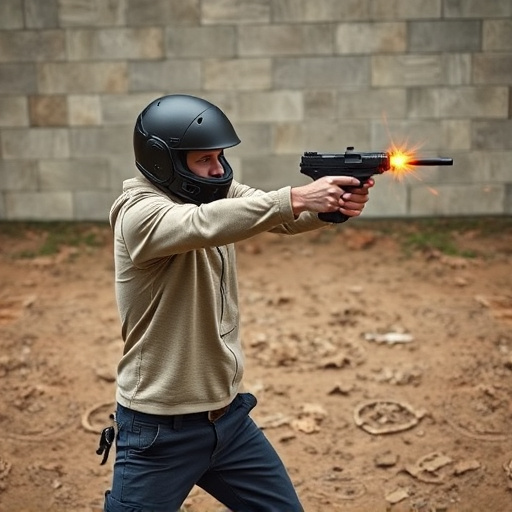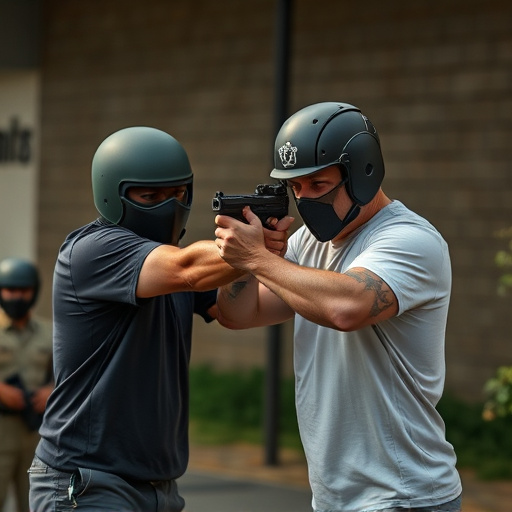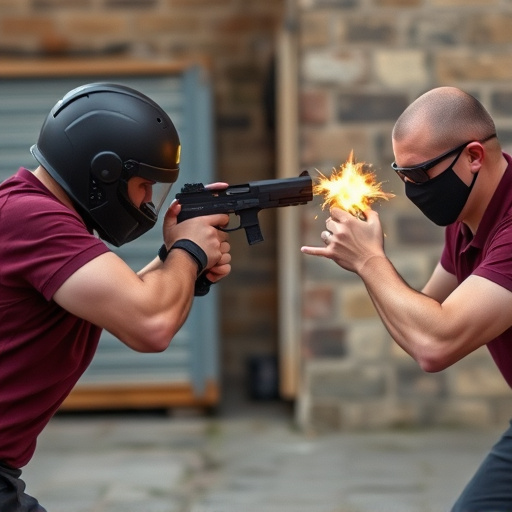Obtaining and maintaining a stun gun involves understanding regional certification requirements, attending training courses, and prioritizing safety. Key aspects include proper battery care such as regular maintenance, inspection, storage, and charging practices according to manufacturer guidelines. Regular testing, cleaning, and protection from extreme temperatures further enhance device reliability and longevity. Following these steps ensures optimal stun gun performance and extends battery life, addressing common issues associated with corrosion and reduced capacity.
“Uncover the power of non-lethal weapon training and certification—a growing necessity for personal safety. This comprehensive guide explores the intricacies of obtaining your certification, from understanding the legal requirements to selecting the ideal stun gun. We delve into crucial aspects of stun gun maintenance, including battery care, to ensure optimal performance. Learn effective strategies to maximize your stun gun’s battery life and avoid common pitfalls. By following these tips, you’ll be well-prepared to make informed decisions regarding your safety.”
- Understanding Non-Lethal Weapon Training Certification Requirements
- Choosing the Right Stun Gun and Battery Maintenance Tips
- Effective Strategies for Maximizing Battery Life in a Stun Gun
- Common Mistakes to Avoid During Stun Gun Battery Care
Understanding Non-Lethal Weapon Training Certification Requirements

Non-lethal weapon training certification requirements vary by region, but understanding the basics is essential for anyone looking to acquire and use these devices responsibly. To obtain a stun gun certification, individuals typically need to attend approved training courses that cover safety protocols, legal implications, and practical usage. These courses often include hands-on demonstrations and exercises to ensure users are competent in deploying non-lethal force tools effectively while minimizing the risk of injury or harm.
One key aspect often emphasized in such training is proper battery maintenance for stun guns, as a well-maintained battery ensures optimal device performance when needed. Users are taught how to check battery levels, calibrate devices, and replace batteries regularly to guarantee their stun guns are always ready for use. Understanding these fundamental care practices not only enhances safety but also extends the lifespan of non-lethal weapons, making them reliable tools in emergency situations or personal defense scenarios.
Choosing the Right Stun Gun and Battery Maintenance Tips

When choosing a stun gun, it’s crucial to consider factors like voltage, current, and pulse width—higher values offering more power but also requiring proper training for safe use. Look for reputable brands known for quality and reliability, ensuring you get a device that suits your needs. Battery maintenance is an essential aspect of stun gun ownership. Most stun guns use replaceable or rechargeable lithium-ion batteries, which require careful handling. Regularly inspect batteries for signs of damage, corrosion, or leakage. Keep them in cool, dry places, and store extra batteries properly to maximize their lifespan.
Proper charging is vital; follow the manufacturer’s guidelines closely. Avoid overcharging, as it can lead to battery degradation. Periodically test your stun gun to ensure it deploys as intended, and remember that regular maintenance, including cleaning and lubricating moving parts (as per the manufacturer’s advice), will extend both its functionality and battery life.
Effective Strategies for Maximizing Battery Life in a Stun Gun

Maintaining optimal battery life in your stun gun is crucial for ensuring its reliability and longevity. One effective strategy involves regular charging, adhering to the manufacturer’s guidelines. Avoid overcharging by removing the battery after it reaches a full charge, as continued plugging in can degrade performance over time.
Additionally, minimizing exposure to extreme temperatures plays a vital role. Extreme heat or cold can impact the battery’s capacity and lifespan. Storing your stun gun in a controlled environment and protecting it from direct sunlight or freezing conditions will contribute to better battery health. Regular cleaning of the device is also beneficial, as dust and debris buildup can interfere with charging connections.
Common Mistakes to Avoid During Stun Gun Battery Care

When it comes to non-lethal weapon training, proper care of your stun gun battery is paramount. A common mistake is neglecting regular maintenance, leading to reduced battery life and performance issues. Stun guns, like any electrical device, require consistent attention to ensure optimal functioning. Users often overlook the importance of keeping the battery clean, especially in high-humidity environments, which can accelerate corrosion on contacts. Regular cleaning with a soft cloth or brush will prevent this and maintain good conductivity.
Another blunder is overcharging, which can be just as damaging as undercharging. Always follow manufacturer guidelines for charging cycles and never leave your stun gun charged for extended periods. Overcharging can lead to battery swelling, reduced capacity, or even permanent damage. Proper storage is equally crucial; storing the device in extreme temperatures or direct sunlight can degrade the battery faster. Use a cool, dry place, as recommended by the manufacturer, to prolong the life of your stun gun battery and ensure it’s ready when you need it most.
Obtaining your non-lethal weapon training certification is just the first step. To ensure maximum effectiveness and safety, understanding how to properly maintain your stun gun battery is crucial. By following the tips outlined in this article, including effective strategies for maximizing battery life and common mistakes to avoid, you’ll be well-prepared to rely on your stun gun when it matters most. Remember, a well-maintained stun gun is a reliable tool that can provide peace of mind and enhance your personal safety.
